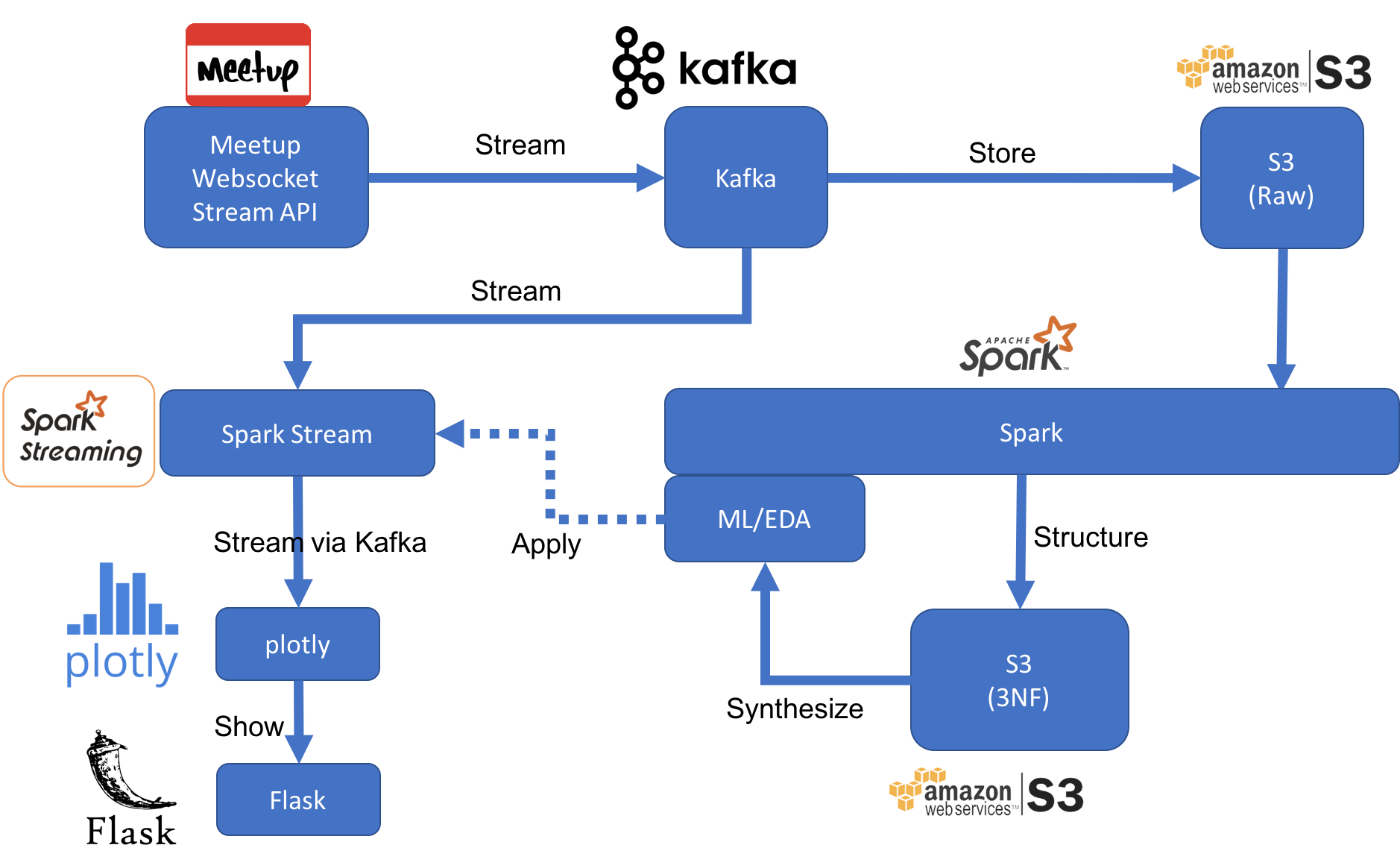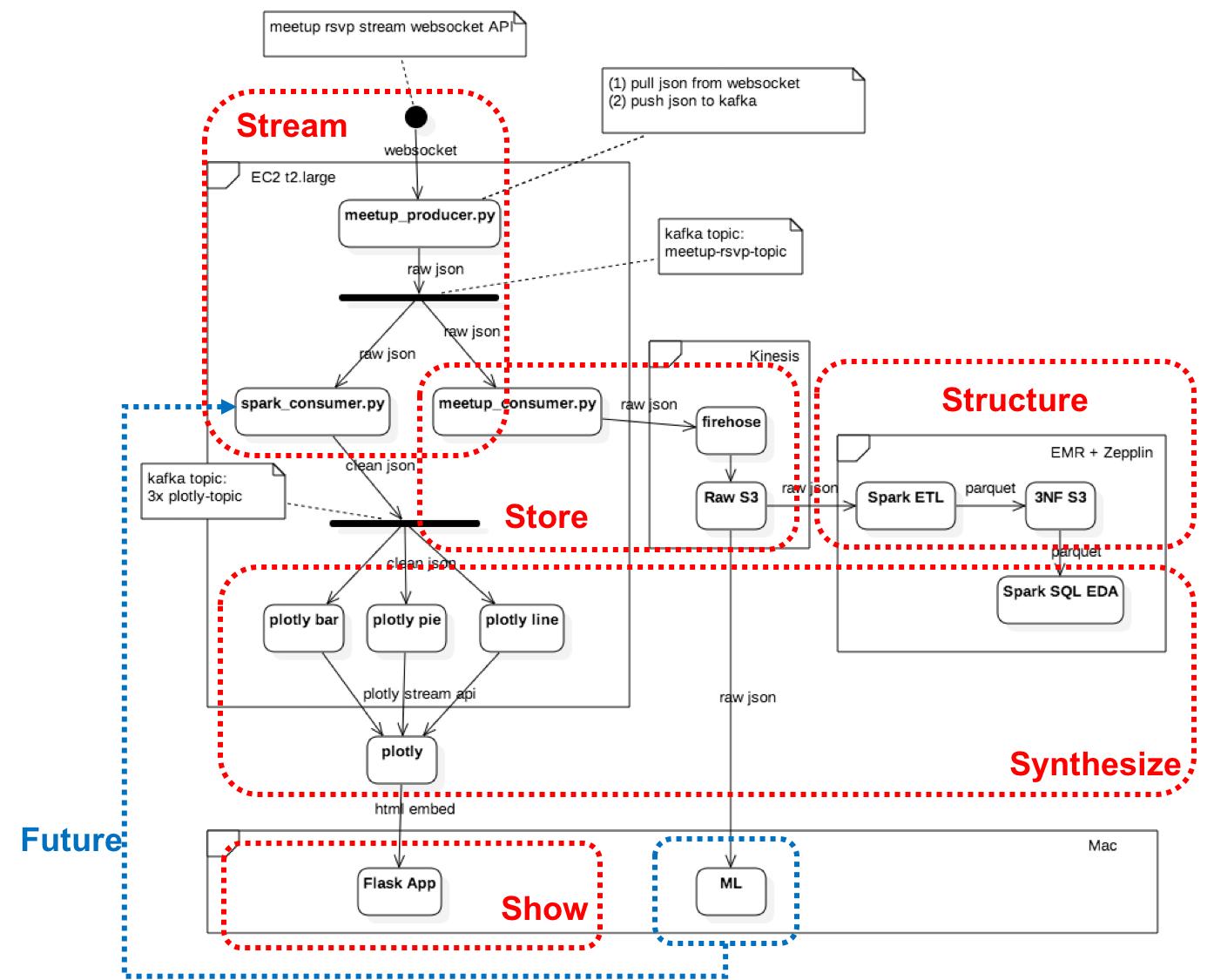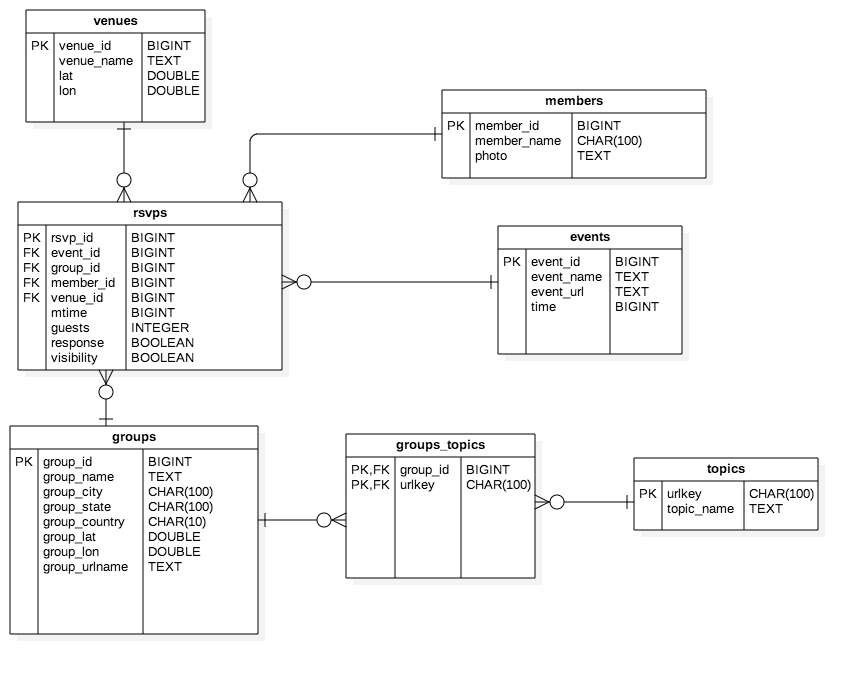Study meetup RSVP stream data
Meetup RSVP stream API:
http://stream.meetup.com/2/rsvps
The inidial idea of the target architecture looks like below.
The exact implementation is shown as below.
- Kafka Websocket Producer: recieve from Meetup Websocket Stream API, pipe to 1st Kafka topic
- Kafka Instance: running in EC2
- Kafka Spark Streaming Consumer: receive from Kafka, pipe to Spark Stream for real-time analysis, then forward transformed data to 2nd kafka topic
- Kafka Firehose Consumer: receive from 1st Kafka topic, forward raw data to Kinesis Firehose
- Raw S3: receive from Firhose, store raw data in S3 bucket for batch analysis at later stage
- Spark ETL: read raw data from S3, perform ETL to transform raw data into structured data, persisted as Spark DataFrame paquet in separate S3 location
- 3NF S3: parquet-ed Spark DataFrame version of structured ETL data. The ETL transofrmed data shall conform to 3rd Normal Form.
- Spark SQL EDA: load the parquet-ed dataframe, perform simple EDA on meetup rsvp data, e.g. who is the most active user, which is the most popular group, etc
- Plotly Updater: kafka consumers that receive from 2nd kafka topic, transform data and update plotly charts via plotly streaming API.
- Machine Learning:
- download parquet data from S3 to local (e.g.
aws s3 sync) - load DataFrame in sklearn
- perform hierarchical clustering using urlkeys
- perform regression with ensemble method to predict cluster label
- download parquet data from S3 to local (e.g.
- Flask: python web server to serve templated web page
- Plotly: real-time dynamic charts to show dashboard about streaming data
- Kafka: current setup is single instance, SPoF. Future >> Scale Out
- Spark: current setup is using EMR cluster, already fault tolerant; RDD + DAG delivers resilient abstraction
- S3: rely on Amazon to make it fault tolerant (hopefully...)
- Flask: current setup is single Flask instance, SPoF. Future >> use NginX/Apache http server + scale out
- Spark RDD is imutable, delivers "read only" and "write only" aspect
- Spark Stream works on "mini batches" delivers low latency (relatively)
- Kafka: future scale out
- Spark: already scalable with EMR
- S3: already scalable
- Flask: future scale out (cluster + load balancer + stateless)
- The architecutre can be generalized to any near real-time streaming text processing workload, by replacing the business logic part
- For true real-time streaming, need to explore event based approach
- Kafka vanilla producer/consumer is flexible to handle non-frequent data model changes (e.g. change both side)
- Future to adopt Avro producer/consumer for dynamic typing
- Offline batch aspect supported by Spark SQL
- Real-time aspect is not supported as for now. Future: implement lambda architecture to support ad-hoc queries by union the query result from both stream and batch sides
- Use Vagrant and start-up script for deployment automation and easy maintenance
- Use EC2 features (e.g. snapshot, monitor) for fast recovery
- EC2 trace logs, it's there, not obvious though...
Both Parquet-ed S3 DataFrame and RDBMS PostgreSQL persisted data shall conform with 3rd Normal Form (3NF).
The ER diagram as below.
- Build full-fledged Lambda architecture to "merge" the stream and batch query result, show in Web HMI
- Distributed Kafka setup
- Shift to Mongo to support flexible/free schema
- More machine learning tasks
- Query Interface
- Scale out Flask to NginX/Apache http server cluster + load balancer



